Over the last eight years, I have sold thousands of vintage pieces of furniture, and in the past couple of years, we have started manufacturing vintage-inspired new furniture. So I happen to know a little bit about both.
Before you start thinking about your dream color, choose whether to select a vintage piece of furniture or a newly-made piece. I want to explain the major differences in aesthetics and functionality between newly-made and vintage furniture.
Vintage furniture pieces that you see today are, on average, around 50-60 years old. Some of the mahogany pieces can be as old as 80+ years old. Styles, craftsmanship, and technology have changed in the years since. Therefore, vintage possess different qualities than their modern counterparts.
Both have their pros and their cons. It’s just a matter of which one will fit your budget and your personal preferences best.
Visible vs. Invisible Hinges
Vintage pieces will have traditional butt hinges that are visible from the outside.
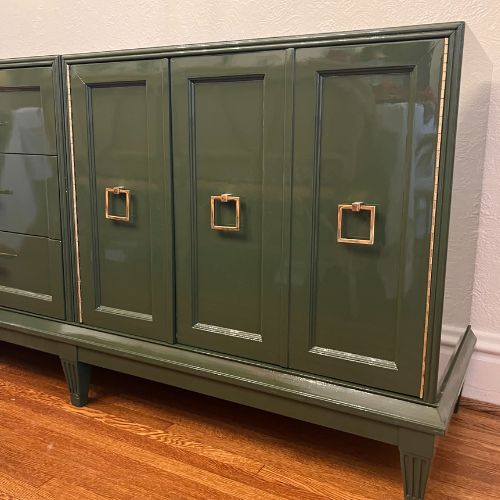
In some vintage pieces, such as chinoiserie or campaign, the hinge is a highlighted design element or a very decorative element.
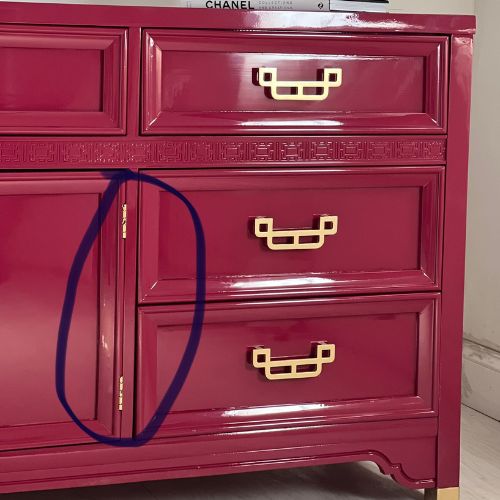
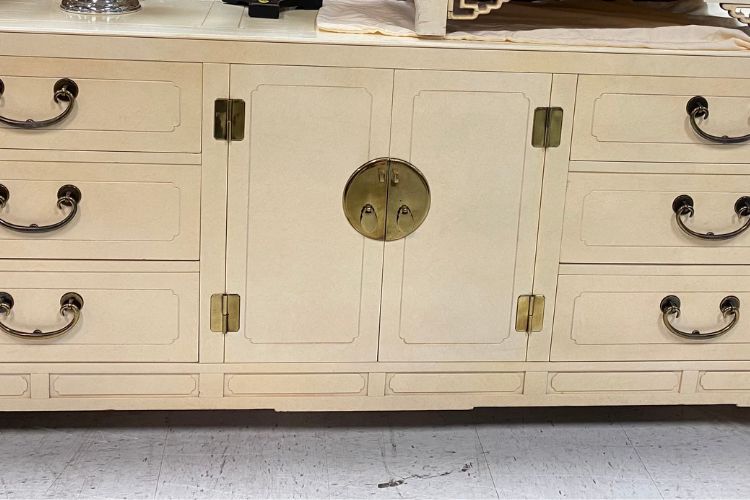
Newly-made pieces will have invisible European (Euro) hinges. Euro hinges are very bulky but are completely invisible from the outside.


Another advantage of a euro hinge is that it is self and soft close. That means that when you push the door, it will slowly close without a slamming sound.

Ball Bearing Glides vs. Wood Glides
The glides on drawers in vintage pieces will be wood-on-wood. When these vintage items were made, technology such as ball bearings did not yet exist or was not mainstream and, therefore, not widely used. Due to this fact, when opening drawers on vintage pieces, there will be friction, causing some effort to pull and push. The wood-on-wood mechanism does not allow the drawers to close independently or softly.
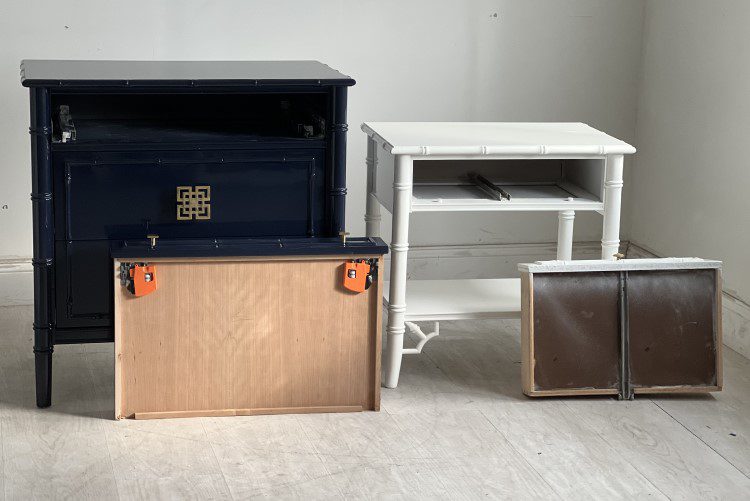
Something else to consider is that the drawers in vintage furniture will not be able to extend fully due to the wood-on-wood glides.
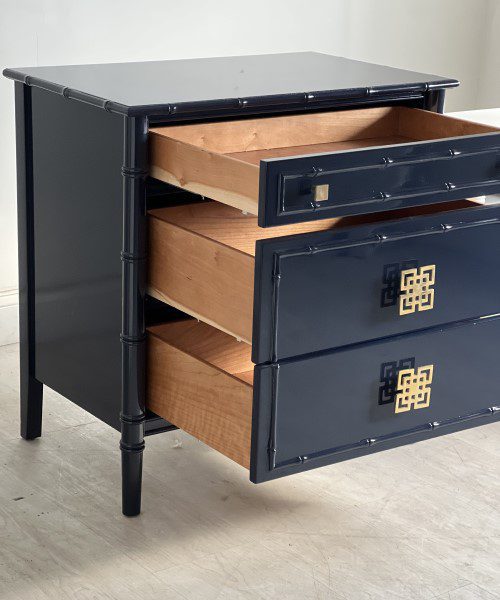

The advantage of fully extendable glides is that you can fully open a drawer and see what’s in the back. That’s not possible with vintage drawers.
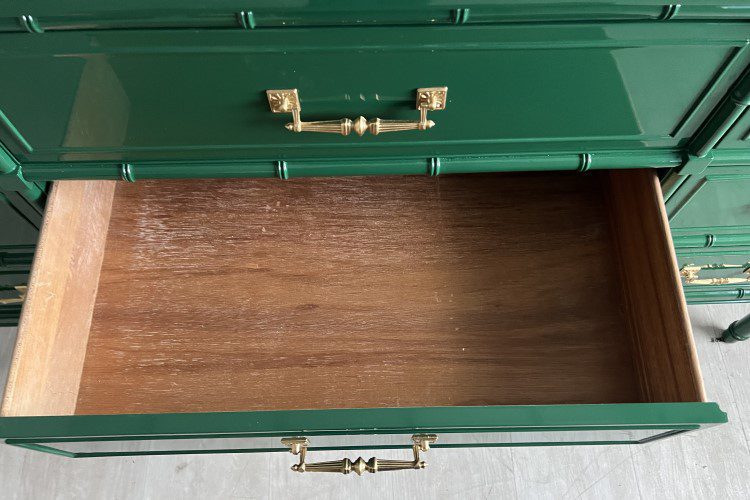
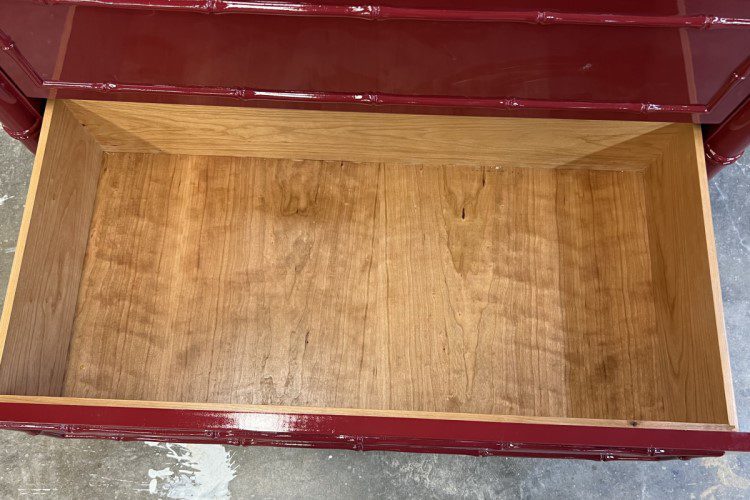
Modern vs. Vintage Proportions
This is the biggest reason newly made furniture appeals to some buyers.
Back in the day, 50-80 years ago, most homes were much smaller. Rooms were smaller, more chopped up, and ceilings were lower. Now everything has gotten bigger.
Houses have 10-12 foot or even two-story ceilings. Rooms are BIG or HUGE, and layouts are open. A typical vintage dresser or credenza that’s only 30″ tall will look entirely out of place in a home with 12-foot ceilings, and a 60″ dresser will look miniature in a 20′ X 20′ main bedroom.
On the other hand, if you live in an older home with smaller rooms and average-height ceilings, vintage is just the right fit for you. The proportions are perfect because the house will likely match the furniture era.
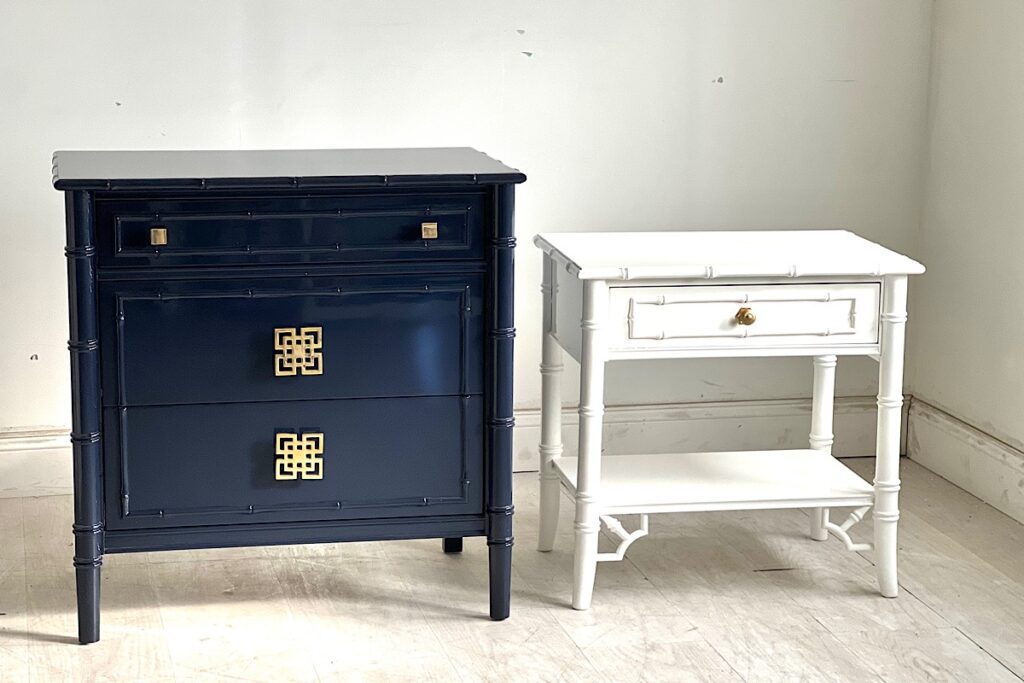
The nightstand in navy is a 30″ tall nightstand. It’s essential for a large main bedroom with a king-size bed. You could go bigger if you wanted. The white nightstand is vintage; hence, it’s such a petite size.
Safety Concerns
Remember that pulling the drawer too far out on a vintage piece risks the drawer falling out since no safety mechanism can stop that from happening. Newly-made glides have a mechanism that prevents this from happening. So, if safety is your top priority, newly-made furniture is the way to go.
Signs of Usage and Distinct Smell
Because vintage furniture has been around and possibly used for decades by its previous owner, signs of usage are inevitable and acceptable. For example, dresser drawers show signs of use, with the top drawers showing the most wear and the bottom drawers showing the least.
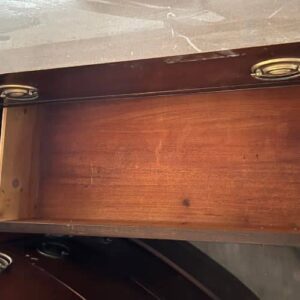
There is a difference between getting into a new car vs. a used one, right? It’s kind of similar to furniture. New furniture will have that distinct fresh smell, whereas vintage furniture will have that “thrift store smell.”
Although signs of usage and smell of use are acceptable, you should not settle for musty or smokey-smelling furniture. I am very particular about the pieces I choose to have in our shop. Neither of these issues will be a concern in the vintage furniture we keep in stock.
Cost Difference
Buying a vintage piece will be significantly less expensive than buying newly-made furniture. Most vintage pieces can be sourced for $200-$500. Building a new piece of furniture (in America) costs over $1000 minimum for labor and materials.
Even with the costs associated with lacquering, a vintage piece will still be a more affordable option.
Lead Times. How Quickly Do You Want It?
Considering we have the vintage furniture in stock and ready to be lacquered, turnaround time will be shorter than if you order a newly-made piece. The typical turnaround time is eight weeks to lacquer and deliver a vintage piece. Please check current lead times before ordering, as lead times can change throughout the year. The typical lead time for made-to-order new furniture is at least 12 weeks. It’s made by humans, and they don’t like to work 24/7.
Simple and Non-fussy vs. Curves and Details
The beauty of vintage is that it has beautifully carved details, turned legs, curved drawers and doors, and overall a frivolous, ornate aesthetic.
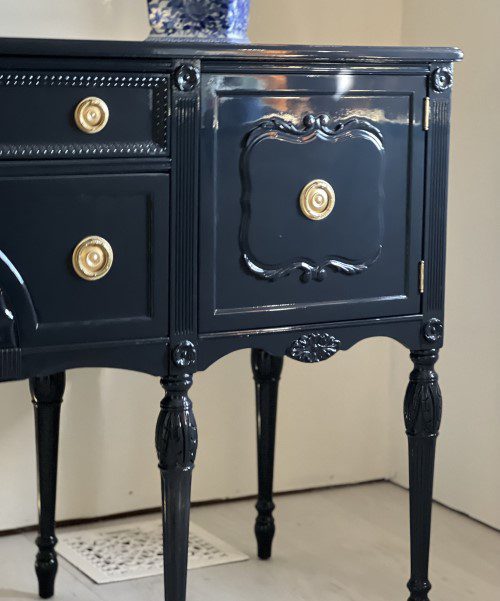
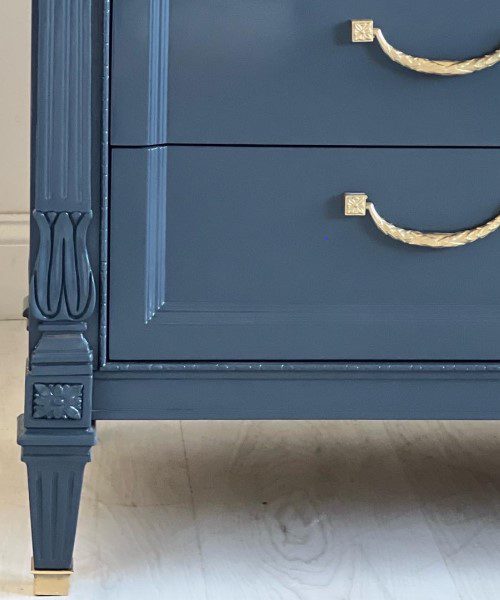
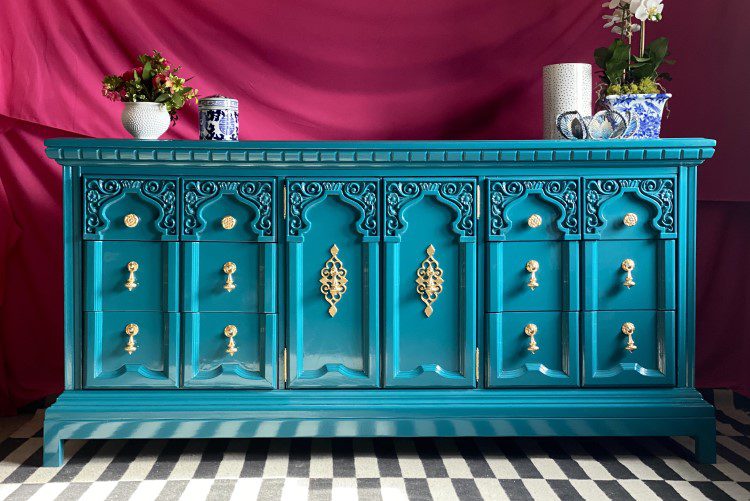
Newly-made furniture is simple, clean, and boxy. Some people may call it boring, yawn-worthy. Honestly, it’s a matter of personal preference.
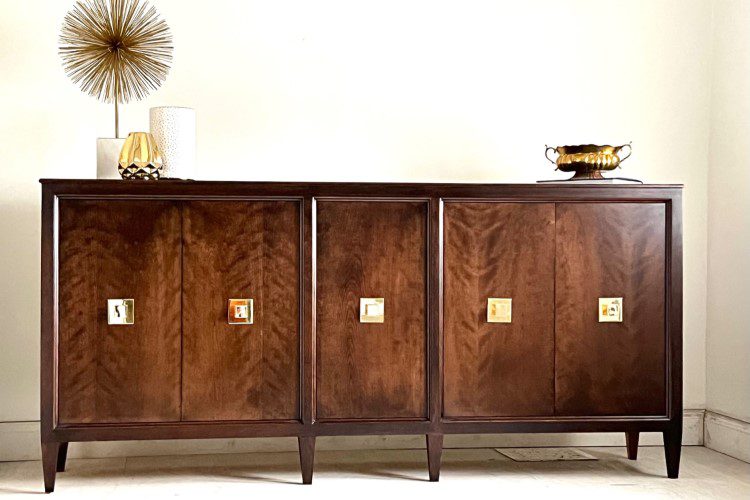
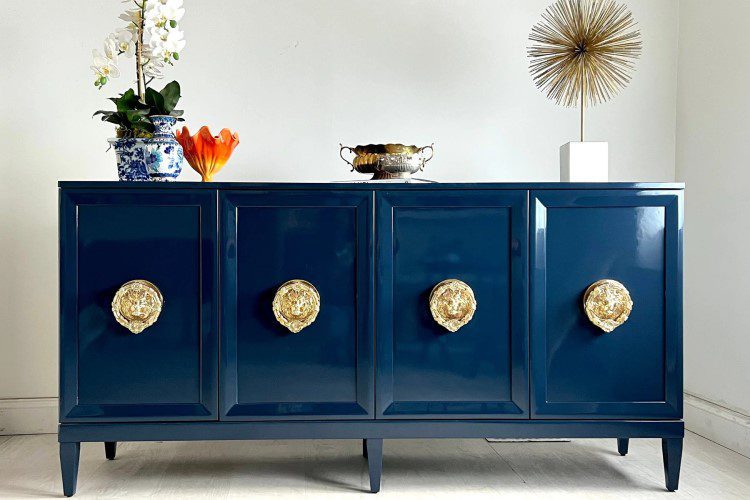
Unique Ornate Hardware
In addition, vintage pieces can come with unique, stunning hardware that was specially designed for just a particular line. This is very much the case for hardware on chinoiserie pieces.
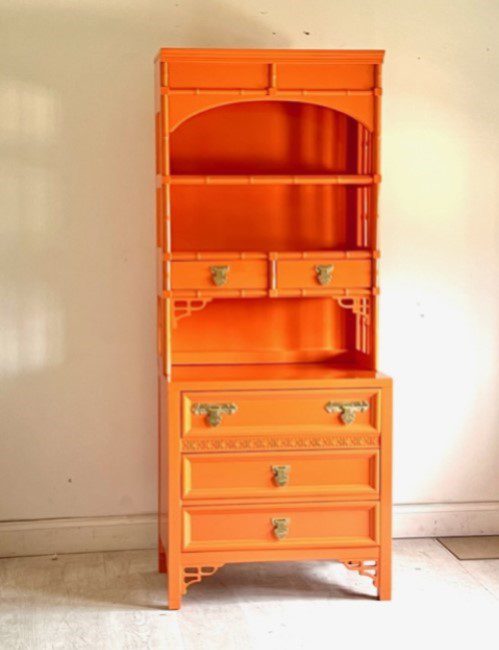
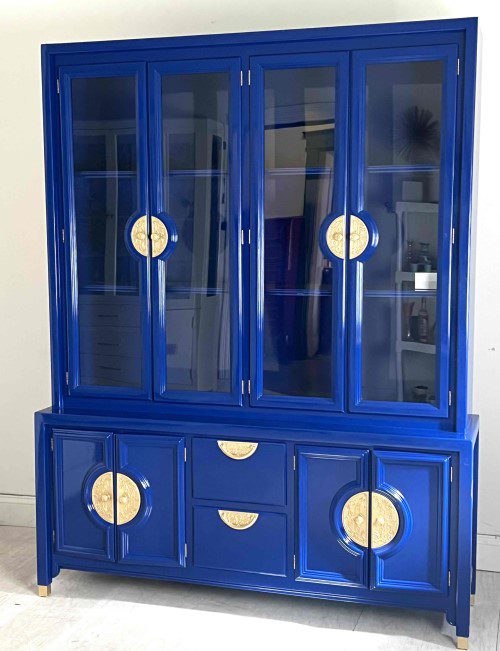
Most average newly made pieces of furniture will have generic hardware because they are limited by what’s readily available and cheaper to source the material. Meh!
Lets Recap
New Furniture Pros and Cons:
- Invisible Euro Hinges
- Soft close glides
- Higher safety standards
- Clean, modern aesthetic
- A clean, new smell
- Larger Proportions suitable for larger homes
- Higher cost
- Longer lead times
- It can be boxy and boring
- Hardware can be meh!
Vintage Furniture Pros and Cons
- Unique ornate details
- Cheaper overall
- Quicker delivery
- Beautiful curves
- Small proportions suitable for smaller homes
- Obvious signs of wear
- Can have the smell of used
- No soft closed doors and drawers
- It can be unsafe for a child’s room
If you have any questions or need help deciding which piece is right for you, do not hesitate to email us.
We also have great informative FAQ videos on our YouTube channel. Consider subscribing
